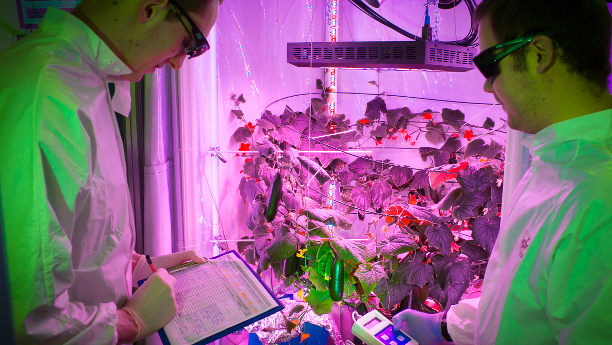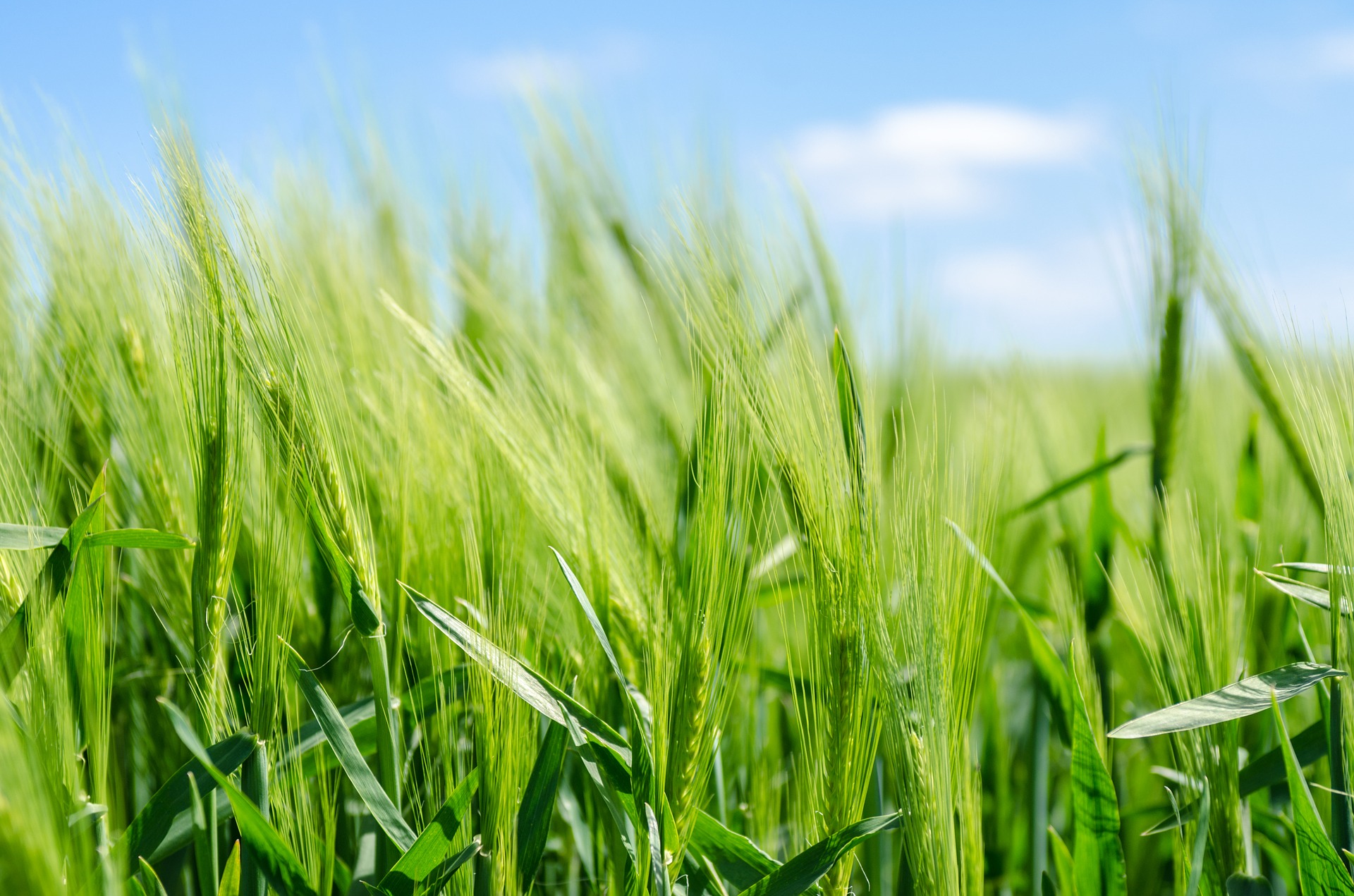Farming in space: Scientists develop multi-storey greenhouses
The residents of these high-rise buildings are not your usual inner city residents – tomatoes grow on the fifth floor, herbs and cucumbers on the third. This is how engineers from the German Center for Aerospace (DLR) in Bremen imagine agriculture of the future.

The sky farm, or vertical farming, will not only provide the town’s residents with fresh vegetables, the scientists are also developing greenhouses for astronauts in space. As part of their research to build the greenhouses, engineers from DLR have already grown dozens of lettuces under a pink light in a sterilized laboratory. The greenhouses contain combined life-support systems and do not require soil, but hang in the air whilst their roots are constantly sprayed with a solution containing nutrients. The DLR engineers from the research group Eden (more ...) are currently working on developing special greenhouse modules to supply fresh food to astronauts during future long-term missions.
Skyfarming for the masses
These modules are not just restricted to farming in space; they will also be useful on earth. Together with international partners, the DLR has developed computer simulations with 30m high buildings for inner cities, which will be used for growing vegetables. Each building has five floors, with a floor space of 35 x 74m and each floor is 6m high. Out of the five storeys, four are intended for cultivation, with the ground floor used for offices, cold stores and logistics. The engineers have estimated that annually, 630,000 kg of lettuces and 95,000 kg of tomatoes could be grown per floor. “The plants will be bred under well controlled and optimal conditions in our production factory,” says Conrad Zeidler from the DLR Institute of space systems. “Our lettuces and tomatoes taste no different to those you buy in the supermarkets today.”
Cultivation without pests and pesticides
The vegetables are grown in a mixture of water and nutrients and do not require soil. The whole system is hermetically sealed so that weeds and pests cannot penetrate the modules. As a result, pesticides and herbicides are not neccessary. The plants grow in several tiers one above the other. Light-emitting diodes provide them with exactly the amount of light they need. The water, in which they grow, is administered through a circuit and is recycled over and over.
Life on Mars
The scientists are concentrating on highly perishable vegetables or fruit with a high water content such as lettuce, cucumbers and tomatoes – food that cannot be stored easily. Thus it makes more sense to grow these vegetables in space. The greenhouses in space will contain combined life-support systems, which use recycled urine to manufacture fertilizer, helping to grow the food in an environment conducive to Mars and the Moon. Aside from providing the astronauts with nutritional benefits, the plants produce oxygen and give off a lot of water, which can be used for drinking. The DHL engineers hope that vertical farming can also be implemented in dry zones. Because little water is lost, just the amount that the plants store, water is easily replenished than with irrigation, a method that uses large amounts of water. And the researchers have set themselves a goal: once all stages have been completed the first greenhouse will be tested for nine months in 2017 in an inhospitable environment in the Antarctic.


